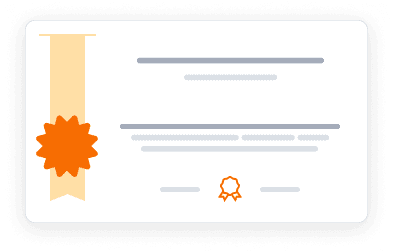Master FPGA-accelerated cloud application development using SDAccel. Gain practical skills through real-world examples and hands-on exercises.
Master FPGA-accelerated cloud application development using SDAccel. Gain practical skills through real-world examples and hands-on exercises.
Dive into the world of FPGA-accelerated cloud applications with this comprehensive, hands-on course. Designed for intermediate-level programmers, this course offers a deep exploration of developing high-performance applications using Xilinx SDAccel and Amazon EC2 F1 instances. Through a practical approach, you'll learn to harness the power of FPGAs in cloud computing, focusing on real-world scenarios in computational biology. The course covers essential topics such as cloud infrastructure, FPGA acceleration techniques, and the implementation of complex algorithms like Smith-Waterman. By the end of this 12-hour journey, you'll have gained valuable skills in configuring FPGA systems, optimizing performance, and deploying accelerated applications in cloud environments. This course is ideal for those looking to enhance their expertise in advanced computing architectures and cloud-based acceleration strategies.
4.4
(26 ratings)
2,638 already enrolled
Instructors:
English
What you'll learn
Understand cloud computing infrastructures and the role of FPGA acceleration
Develop FPGA-accelerated applications using Xilinx SDAccel and Amazon EC2 F1 instances
Implement and optimize the Smith-Waterman algorithm for DNA sequence alignment
Apply parallelism and systolic array architectures in FPGA designs
Optimize memory access and data compression for improved performance
Analyze algorithm performance using the Roofline model
Skills you'll gain
This course includes:
4 Hours PreRecorded video
9 assignments
Access on Mobile, Tablet, Desktop
FullTime access
Shareable certificate
Get a Completion Certificate
Share your certificate with prospective employers and your professional network on LinkedIn.
Created by
Provided by

Top companies offer this course to their employees
Top companies provide this course to enhance their employees' skills, ensuring they excel in handling complex projects and drive organizational success.





There are 5 modules in this course
This course provides a comprehensive, practical approach to developing FPGA-accelerated cloud applications using SDAccel. It covers the fundamentals of cloud infrastructure and reconfigurable acceleration, with a focus on using Xilinx SDAccel to program Amazon EC2 F1 instances. The curriculum is structured around a real-world example from computational biology, specifically the Smith-Waterman algorithm for DNA sequence alignment. Students will learn to analyze algorithm performance, implement hardware acceleration, and optimize for cloud deployment. The course progresses from basic concepts to advanced techniques, including parallelism, systolic arrays, and memory optimization. By working through the Smith-Waterman example, participants gain hands-on experience in all aspects of FPGA-accelerated application development, from initial implementation to cloud deployment on AWS F1 instances.
Reconfigurable cloud infrastructure
Module 1 · 1 Hours to complete
On how to accelerate the cloud with SDAccel
Module 2 · 2 Hours to complete
Summing things up: the Smith-Waterman algorithm
Module 3 · 2 Hours to complete
The Smith-Waterman example in details
Module 4 · 5 Hours to complete
Course conclusions
Module 5 · 47 Minutes to complete
Fee Structure
Payment options
Financial Aid
Instructor
Leader in Computing Systems and Reconfigurability
Marco Domenico Santambrogio is an Assistant Professor at Politecnico di Milano and a Research Affiliate at the CSAIL lab at MIT. He earned his laurea (M.Sc. equivalent) degree in Computer Engineering from Politecnico di Milano in 2004, followed by a second M.Sc. in Computer Science from the University of Illinois at Chicago (UIC) in 2005, and a Ph.D. in Computer Engineering from Politecnico di Milano in 2008. Dr. Santambrogio was a postdoctoral fellow at CSAIL, MIT, and has held visiting positions at Northwestern University and the Heinz Nixdorf Institute. He is a senior member of both IEEE and ACM, as well as a member of the IEEE Computer Society and the IEEE Circuits and Systems Society. Santambrogio has participated in various program committees for electronic design automation conferences, including DAC, DATE, and FPL. He has been affiliated with the Micro Architectures Laboratory at Politecnico di Milano since its inception, where he established the Dynamic Reconfigurability in Embedded System Design (DRESD) project in 2004. In 2011, he founded the Novel, Emerging Computing System Technologies Laboratory (NECSTLab), combining the MicroLab and VPLab, and continues to lead this innovative research facility.
Testimonials
Testimonials and success stories are a testament to the quality of this program and its impact on your career and learning journey. Be the first to help others make an informed decision by sharing your review of the course.
Frequently asked questions
Below are some of the most commonly asked questions about this course. We aim to provide clear and concise answers to help you better understand the course content, structure, and any other relevant information. If you have any additional questions or if your question is not listed here, please don't hesitate to reach out to our support team for further assistance.



